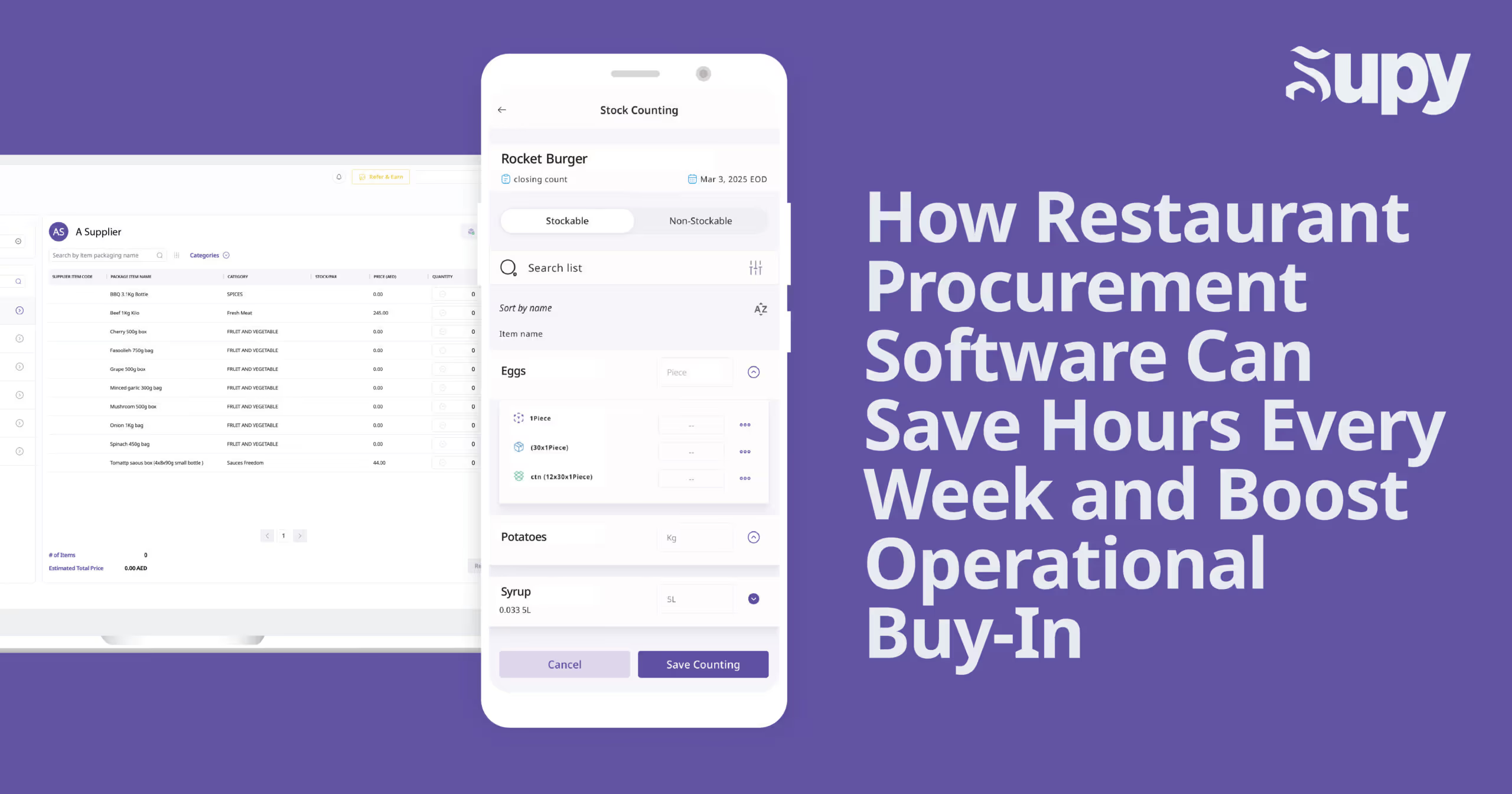How Restaurant Procurement Software Can Save Hours Every Week and Boost Operational Buy-In

In the high-stakes world of food and beverage operations, few processes carry as much daily weight as procurement. It's where margins are made or lost, where consistency begins, and where operational chaos either takes root or gets eliminated. Supy’s Head of Product, Armando (aka Abu Hamad), sat down to break down the most common procurement challenges restaurant groups face, and how modern software is transforming the way multi-branch operators work.
Common Procurement Challenges in Multi-Branch Restaurants
Procurement in restaurant groups is often a source of inefficiency, especially without proper systems in place. According to Armando our Head of integrations and partnerships, the three most common issues operators face include:
1. Lack of Visibility on Purchasing Data
Operators often struggle to track what was ordered, from which supplier, in what quantity, and at what price. Without this data, they’re in a weak position when negotiating supplier terms. Real procurement leverage starts with clear historical data."You want to know your numbers so that when you negotiate, you can say: this is what I’ve bought, this is how it’s trending, and here’s what I’ll need as we grow."
2. Overstocking and Waste
Chefs often over-order to ensure availability, but this leads to excess stock, spoilage, and higher food cost. Without real-time inventory and consumption visibility, it’s nearly impossible to know if you're over-ordering or under-ordering.
3. Unnoticed Supplier Price Changes
Suppliers can adjust prices without notifying the restaurant. If no system flags these changes, invoice discrepancies can go unnoticed, leading to unnecessary cost increases."You might end up paying more than you should simply because the person receiving the invoice isn’t the one who negotiated the price."
Manual Procurement Workflows: The Status Quo
Before adopting restaurant procurement software, many operators rely on WhatsApp, emails, and supplier portals to place orders. This creates several problems:
- No centralized record of what was ordered
- High risk of duplicated or missed orders
- Time-consuming Excel workarounds to extract basic insights
This often leads to emergency purchases at higher market prices, contributing to rising food costs and unreliable inventory levels."You assume someone else placed the order, but they didn’t. Now you're scrambling to buy ingredients at retail cost."
How Supy Streamlines Restaurant Procurement
Supy was designed to simplify and centralize procurement. Here's how it works:
1. Centralized Requests and Approvals
Each team member can submit internal requisitions. These go through a defined approval flow before reaching the supplier, ensuring control and accountability.
2. Custom User Permissions
Whether you want chefs to request only or give full access to supplier ordering, Supy allows flexible user roles and granular permission levels.
3. Three-Way Matching
Supy compares the purchase order, the invoice, and the actual received quantity:
- Missing items are flagged
- Extra items not ordered are rejected
- Price discrepancies are highlighted
Disputes can trigger credit note requests, and real-time alerts prevent errors before they affect margins.
4. Automated OCR for Invoices
Supy reads invoices sent by suppliers and matches them with POs, reducing manual entry and increasing accuracy."We give every operator a clean audit trail. Who ordered, when, what changed, and whether it matched expectations."
Downstream Benefits: Inventory, Cost Control, and Trust
A strong procurement system impacts far more than just orders:
- Accurate Inventory: Correct receiving ensures stock levels are reliable
- Improved Food Cost Tracking: No surprise overcharges, fewer write-offs
- Team Trust in the System: Better data means better decisions, and operators stop relying on guesswork
"If your invoice says 5kg of tomatoes, but you received only 3kg, and still register 5kg in the system, you’re flying blind."
Time Savings: The Ultimate ROI
Depending on complexity and supplier volume, Supy saves each location 30 minutes to several hours weekly. For multi-site operators, that adds up to entire workdays recovered each month."Most of our churn-risk accounts are the ones still ordering outside Supy. The rest cut admin from 2 hours a week to 20 minutes."
A Final Word on Operational Buy-In
Procurement software only works when teams actually use it. Supy makes it easy for restaurant groups to invite all users into the system, customize their permissions, and create real workflows that reduce friction instead of adding it.Whether you're a single-unit store or a chain scaling fast, smart restaurant procurement software can:
- Eliminate chaos
- Create clarity
- Drive down food cost
Ready to gain full control over procurement? Book a demo with Supy and start saving hours every week.







